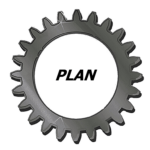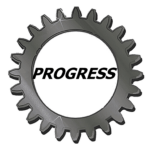Tree Diagram
By mapping out all possible scenarios and their associated probabilities, tree diagrams provide a comprehensive overview that enhances decision-making.

Chapter 1: What is it?

A tree diagram is a graphic representation of a hierarchical structure or a branching process. It consists of nodes, which represent various stages or events, and branches, which connect the nodes and depict the relationships between them. The starting point is usually represented at the top, with subsequent events or decisions branching out below.
Chapter 2 : When do I use it?

Tree diagrams are powerful tools that can greatly enhance decision making in various fields. Whether you are a business executive, a project manager, or a student, understanding how to effectively use these diagrams can help you make informed decisions and achieve optimal outcomes.
Chapter 3: How do I use it?

Step 1: Gather Your Information and Start Your Tree Diagram
The first step to creating a tree diagram is to gather all the necessary information or ideas related to your topic. Take a moment to brainstorm and jot down all the key points, concepts, or subtopics that you want to include in your diagram. Once you have a list, draw a horizontal line in the center of a piece of paper or use a digital tool to create a blank canvas for your tree diagram.
Step 2: Organize and Connect Your Ideas
Now that you have your blank canvas, it’s time to organize your ideas and connect them together. Start by placing your main topic or central idea at the top of the page, just above the horizontal line. From there, draw lines branching out horizontally, representing the main subtopics or categories related to your main topic. As you add more subtopics, branch out vertically from the main branches, creating a tree-like structure. Remember to label each branch or subtopic clearly to maintain clarity and coherence.
Step 3: Add Details and Expand Your Tree Diagram
As you proceed with your tree diagram, it’s important to add more details and expand on each subtopic or category. Think about the specific information, examples, or supporting points that you want to include for each branch. Draw smaller branches or lines stemming from the main branches to represent these details. This will give your tree diagram depth and richness, allowing you to capture a comprehensive view of your topic. Feel free to use different colors, symbols, or shapes to differentiate between different types of details or to highlight important connections.
Step 4: Beautify and Finalize Your Tree Diagram
Once you have added all the necessary details, take a moment to step back and assess your tree diagram. Check for any missing connections, unclear labels, or untidy branches. Use additional lines or arrows to connect related branches and ensure that your diagram flows in a logical and easy-to-follow manner. Don’t be afraid to experiment with different layouts or visual elements to make your tree diagram visually appealing. Once you are satisfied with the final look, consider transferring your diagram to a digital format or adding colors and images to make it even more eye-catching.
Creating a tree diagram may seem intimidating at first, but by following these simple steps, you can easily create a well-structured and visually appealing representation of your topic. Remember that a tree diagram is a flexible tool, and you can adapt it to suit your specific needs and preferences. So go ahead and give it a try for your next project, study session, or brainstorming activity, and experience the benefits of visual organization and clarity.
Chapter 4 :Why should I use it?

Tree diagrams are a powerful tool that enables individuals to unlock optimal results in various endeavors. These diagrams visualize the branching structure of a problem or process, making it easier to understand and navigate. Each branch represents a decision or event that can lead to different outcomes, allowing individuals to evaluate the potential consequences of each choice. By mapping out all possible scenarios and their associated probabilities, tree diagrams provide a comprehensive overview that enhances decision-making. This structured approach allows individuals to identify the most effective strategies, minimize risks, and make informed choices that lead to optimal results.
Chapter 5 : Coaching Benefits
![]()
I need help…
Not all help costs money. Requests for additional information and potential application for your industry, helps us to improve the training experience, at no charge to you.
When do I need coaching services?
Coaching has proven time and time again to be a powerful tool in optimizing performance and driving efficiency in various aspects of life. Whether it is in the workplace, educational settings, or even within personal relationships, coaching has the ability to unlock untapped potential and enhance productivity. By leveraging the collective intelligence and diverse skills of a group, individuals can capitalize on their strengths, overcome challenges, and achieve remarkable results.
What do I get with coaching services?
Our Role – Quality coordinating – Work to understand your system, review your needs, and suggest process improvements.
We help you use a chosen template and apply it to your business model, with or without action plans.
Coaching includes personalized shareable document for use or for future coaching.
1 hour online coaching (one on one coaching) no minimum participates

Download a Decision Tree Template
Templates are like a secret weapon in the arsenal of content creators. They provide a foundation, a starting point that saves us time and energy.
Mobile Format
By using Google Docs we offer an extensive selection of free templates, covering various categories with no special apps to download making them truly mobile. These templates are also available in Microsoft Word format. These templates are designed by professionals, ensuring a polished and visually appealing outcome. With a few clicks, we can have a well-structured document, complete with headings, subheadings, and placeholders for our content. These templates act as a guiding hand, making it easier for us to organize our thoughts and ideas effectively. They eliminate the need to spend hours formatting and styling our documents, enabling us to focus on the content creation itself.
Simplify Creation Content

The true power of templates lies in their ability to simplify and streamline the content creation process. By using pre-designed layouts and formats, we can save valuable time and effort. Rather than starting from a blank canvas and grappling with design decisions, we can simply choose a template that aligns with our desired style and purpose. This not only speeds up the creation process but also ensures a consistent and professional look for our content.
Templates also allow for customization, enabling us to personalize the document according to our needs. This level of flexibility empowers us to create visually stunning content without the need for advanced design skills. Templates break down the barriers between creativity and execution, making content creation accessible to all.
Unleash Your Creativity
Effortless content creation is within our reach, thanks to the power of free templates in Google Docs and Microsoft Word. By utilizing these templates, we can simplify our workflows, save time, and produce high-quality content without the need for extensive design knowledge. Unlocking the potential of templates allows us to focus on what truly matters – our ideas, thoughts, and messages. So why start from scratch when we have a vast library of templates waiting to be explored? Embrace the convenience and unleash your creativity by utilizing the power of free templates in your next content creation endeavor.
What is a Tree Diagram
Watch this Video.
Tree diagrams are visual representations that use branching structures to illustrate the hierarchical relationships between various elements. They resemble the branches of a tree, with a single root or main element branching out into smaller and more specific sub-elements. The main purpose of a tree diagram is to present complex information in a clear and organized manner.
As You Watch This Video
1. Use a tree diagram to evaluate and examine uncertain situations in a visual way and choose the best options going forward.
2. Tree diagrams are flowchart-like diagrams that show the various outcomes from a series of decisions.
3. 3 main parts to a tree diagram – root node, leaf node and branches.
a) the root node – the starting point and 2 of more nodes extend from it,
)b) the leaf node are questions or criteria to be answered,
c) the branches are arrows connecting the node, showing the questions to answer.
4. There are 3 types of tree diagrams – (predicting behavior) cause and effect, y to x and (describing a process) functional.
a) cause and effect tree diagram., (cause and effect is easy and effective. But sometimes when we have a lot of causes, when a deeper analysis is required for each source individually, the best way to manage is by making a tree diagram.)
Y to x tree diagram, (Y-to-x tree diagram starts with an important decision step (Y) and asks the question, “What are the factors driving this Y?” Although it is not really different from the question of cause and effect, the thrust and content of this tree diagram wants to be distinctly different.)
c) Functional tree diagram, (functional tree diagrams are used to develop administrative functions. two functions, to target circumstances to work in every department or to describe the purpose of the work.)
5. Used by project managers to identify all possible senecios and critical to the planning process
6. Lastly, use the team to review the content for accuracy.
Still need to visualize, understand the design of a Tree Diagram and how the method is tested, see the following case studies.

Case Study 1 - Led to Manage LLC
Creating our Tree Diagram
1. After creating our decision matrix (see Tactical Planning Design Course – Decision Matrix) the team wanted to know what factor went into creating a course (defining our purpose first) and what development was need to design a course .
2. We described the functions that went into a course (design plan, which branched into 2 nodes, text content creation and the visual web development.
3. Next breakout was the specifics of the design to accomplish (driving pursuit).
4. Finally the specifics to the pursuit nodes were broken to the questions needed answered, (these questions confirmed the decision matrix outcomes), information needed or the content to be created.
Lessons Learned
1. Team recovered that by comparing the tree diagram to the deployment flowchart (see Tactical Planning Design Course – Process / Deployment Flowchart) that there were two process that were required for course development, (customer-oriented process) COP01 web content display and (support-oriented process) SOP01 course content creation.
2. There was a strong need to create website content templates to guide both processes to standardize the format for the online viewer. In the template any relevant information as to the source, style, tonality, and features were documented, so that the content and web creator could continue the customized theme and layouts for future course develop and to maintain the consistency for the user experience.
3. This was also the first time that the team realized that the structure should also emphasis the 4P / 4D in all processes, documentation and content explanations.
Define Purpose, Design Plan, Drive Pursuit and Develop Progress
